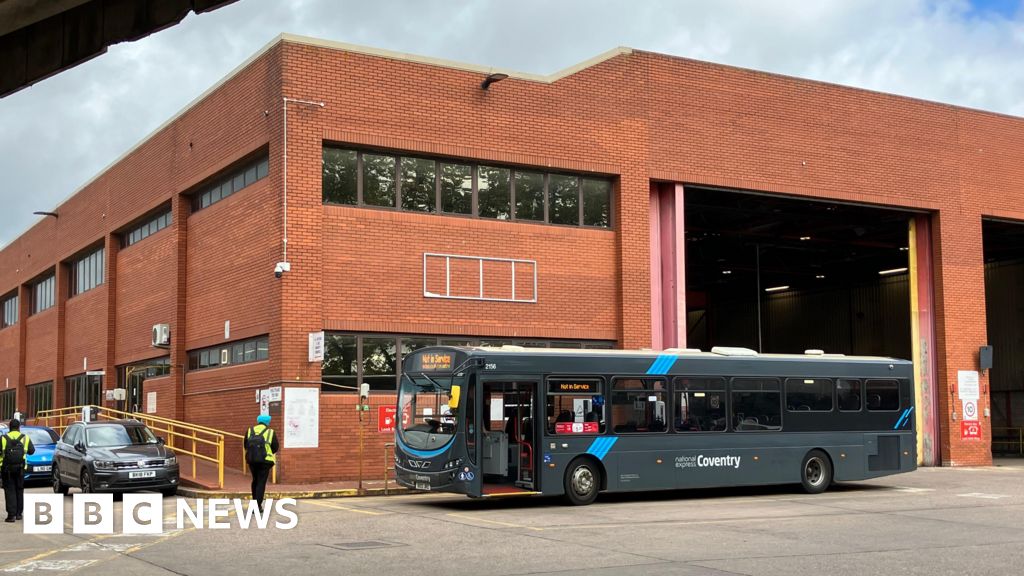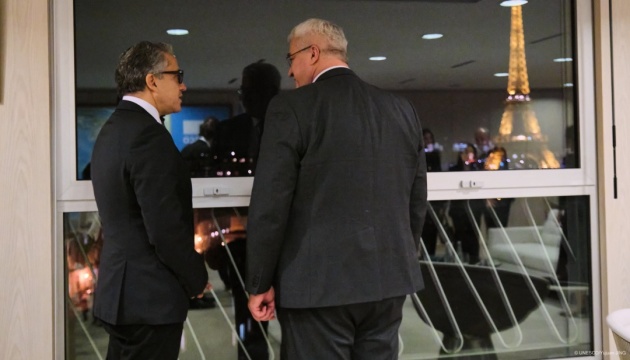West Midlands bus network funding scheme extension approved – BBC

Report on the Extension of the West Midlands Bus Network Support Grant and its Alignment with Sustainable Development Goals
Executive Summary
The West Midlands Combined Authority (WMCA) board has approved a 15-month extension of the Bus Network Support Grant to secure the region’s bus services. This strategic financial intervention is designed to prevent service cuts, maintain network stability, and bridge the transition to a publicly controlled franchising model scheduled for 2027. The decision directly supports several United Nations Sustainable Development Goals (SDGs), most notably SDG 11 (Sustainable Cities and Communities) by ensuring continued access to affordable and reliable public transport.
Grant Details and Strategic Objectives
- Approving Body: West Midlands Combined Authority (WMCA) Board.
- Grant Name: Bus Network Support Grant.
- Duration: A 15-month extension following the conclusion of the current agreement in December.
- Primary Objective: To provide essential financial support to commercial bus operators, thereby preventing large-scale service reductions and safeguarding the network’s reach.
- Strategic Context: This measure serves as a critical transitional strategy to ensure network stability ahead of the planned implementation of a public franchising system in 2027.
Contribution to Sustainable Development Goals (SDGs)
The extension of the Bus Network Support Grant makes a significant contribution to achieving key Sustainable Development Goals:
-
SDG 11: Sustainable Cities and Communities
- The grant directly supports Target 11.2 by ensuring continued access to safe, affordable, accessible, and sustainable transport systems for all residents of the West Midlands.
- It maintains essential transport links that are vital for community cohesion and social inclusion, connecting people to services and opportunities.
- This action reinforces the development of sustainable urban infrastructure, paving the way for a more integrated and publicly accountable transport system.
-
SDG 10: Reduced Inequalities
- By preventing service cuts, the grant protects transport access for lower-income groups, the elderly, and individuals without private vehicles, who rely disproportionately on public bus services.
- This measure directly promotes the social and economic inclusion of all (Target 10.2) by mitigating the risk of transport poverty and ensuring equitable access to employment, education, and healthcare.
-
SDG 8: Decent Work and Economic Growth
- A reliable and comprehensive bus network is critical economic infrastructure that enables the workforce to commute, thereby supporting local businesses and sustaining regional economic activity.
- The stability provided by the grant fosters a predictable environment for both commuters and employers, underpinning the region’s economic resilience.
-
SDG 13: Climate Action
- Maintaining an attractive and viable public transport network encourages a modal shift away from private car usage, which is essential for reducing transport-related greenhouse gas emissions.
- This initiative aligns with broader climate strategies by promoting a more sustainable mode of travel and contributing to cleaner air in the region.
Official Statements and Future Outlook
- Anne Shaw, the outgoing Executive Director of Transport for West Midlands (TfWM), identified the grant as the most value-for-money option to maintain the network’s reach into communities.
- It was noted that while the grant protects against large-scale changes, some network efficiencies will be implemented, with a commitment to advance public notification.
- Mayor Richard Parker affirmed the grant’s importance in stabilizing the bus network in the period leading up to franchising. He also stressed its role in ensuring the transport network is funded responsibly to avoid a large operating deficit.
- The long-term strategy remains the transition to a franchise system by 2027. Under this model, TfWM and regional leaders will assume control of routes, timetables, and fares, enabling long-term investment and further alignment with the region’s sustainable development objectives.
Analysis of Sustainable Development Goals in the Article
1. Which SDGs are addressed or connected to the issues highlighted in the article?
-
SDG 11: Sustainable Cities and Communities
This is the most directly relevant SDG. The article focuses on securing a regional bus network, which is a critical component of public transportation infrastructure in urban and suburban areas. The decision to subsidize the network aims to make the West Midlands a more sustainable and accessible place to live.
-
SDG 9: Industry, Innovation and Infrastructure
The bus network is a key piece of regional infrastructure. The article discusses measures to ensure its stability, funding, and long-term viability through subsidies and a new franchising system. This relates to developing reliable, sustainable, and resilient infrastructure to support economic development and well-being.
-
SDG 10: Reduced Inequalities
Public transportation is essential for social and economic inclusion. By preventing service cuts and aiming to “maintain the reach of the network to communities,” the policy helps ensure that all residents, regardless of their economic status or access to private vehicles, can access jobs, education, and services, thereby reducing inequality.
2. What specific targets under those SDGs can be identified based on the article’s content?
-
Target 11.2: Provide access to safe, affordable, accessible and sustainable transport systems for all.
The article directly addresses this target. The extension of the “Bus Network Support Grant” is explicitly to “secure’ the future of a regional bus network and stop services being cut.” The long-term plan to bring the bus network under public control, where leaders will “take control of routes and timetables and set fares,” is a strategic move towards creating a more accessible and sustainable transport system for the entire community.
-
Target 9.1: Develop quality, reliable, sustainable and resilient infrastructure… with a focus on affordable and equitable access for all.
The actions described in the article are aimed at ensuring the bus network—a critical piece of infrastructure—remains reliable and resilient. The subsidy is a measure to “stabilise and secure our bus network” and ensure it is “properly funded” to avoid an operating deficit. This focus on financial stability is crucial for maintaining a quality service that provides equitable access for communities.
-
Target 10.2: Empower and promote the social, economic and political inclusion of all.
The subsidy is intended to “maintain the reach of the network to communities.” This action directly supports social and economic inclusion by ensuring that public transport remains an option for people to travel to work, school, and other essential destinations. Preventing service cuts is a key step in ensuring that transportation barriers do not exacerbate inequality.
3. Are there any indicators mentioned or implied in the article that can be used to measure progress towards the identified targets?
-
Implied Indicator for Target 11.2: Proportion of the population with convenient access to public transport.
While not explicitly stating the official indicator (11.2.1), the article’s core purpose is to maintain this proportion. The success of the grant can be measured by the number of bus services that are not cut and the continued “reach of the network to communities.” The statement that the grant will “protect the network from large scale changes” implies that a key metric is the stability of the existing network coverage.
-
Implied Indicator for Target 9.1: Financial stability of the transport infrastructure.
The article mentions that the subsidy is about £50m per year and that a goal is to ensure “the transport network is properly funded and we are not leaving ourselves with a burden of a very large operating deficit.” Therefore, the operating deficit of the bus network and the level of public financial support required to maintain services can be used as indicators to measure the financial resilience and sustainability of this infrastructure.
-
Implied Indicator for Target 10.2: Continuity of service for communities.
Progress towards this target can be measured by tracking changes to the bus network. The article notes that “there will be some efficiencies on the bus network resulting in some changes.” An indicator would be the number and scale of these changes, specifically whether they disproportionately affect vulnerable or remote communities, thus impacting their level of social and economic inclusion.
4. Table of SDGs, Targets, and Indicators
| SDGs | Targets | Indicators |
|---|---|---|
| SDG 11: Sustainable Cities and Communities | Target 11.2: By 2030, provide access to safe, affordable, accessible and sustainable transport systems for all, improving road safety, notably by expanding public transport. | Implied Indicator (related to 11.2.1): The stability of network coverage, measured by the number of bus services maintained and the prevention of “large scale changes” to the network’s reach. |
| SDG 9: Industry, Innovation and Infrastructure | Target 9.1: Develop quality, reliable, sustainable and resilient infrastructure… to support economic development and human well-being, with a focus on affordable and equitable access for all. | Implied Indicator: The financial sustainability of the bus network, measured by the level of public subsidy required (£50m per year) and the avoidance of a “large operating deficit.” |
| SDG 10: Reduced Inequalities | Target 10.2: By 2030, empower and promote the social, economic and political inclusion of all. | Implied Indicator: The extent to which bus services are maintained across all communities, measured by tracking any “efficiencies on the bus network resulting in some changes” to ensure they do not reduce access for vulnerable populations. |
Source: bbc.com
What is Your Reaction?
 Like
0
Like
0
 Dislike
0
Dislike
0
 Love
0
Love
0
 Funny
0
Funny
0
 Angry
0
Angry
0
 Sad
0
Sad
0
 Wow
0
Wow
0
















































:focal(1500,1000)/https://media.globalcitizen.org/a6/9a/a69a4720-d8a1-4715-b596-18738d03c05c/rotary_polio_hero_image.jpg?#)







/countries/sri-lanka/photo-credit---dmc-sri-lanka.tmb-1200v.jpg?sfvrsn=dc298bcc_1#)

















